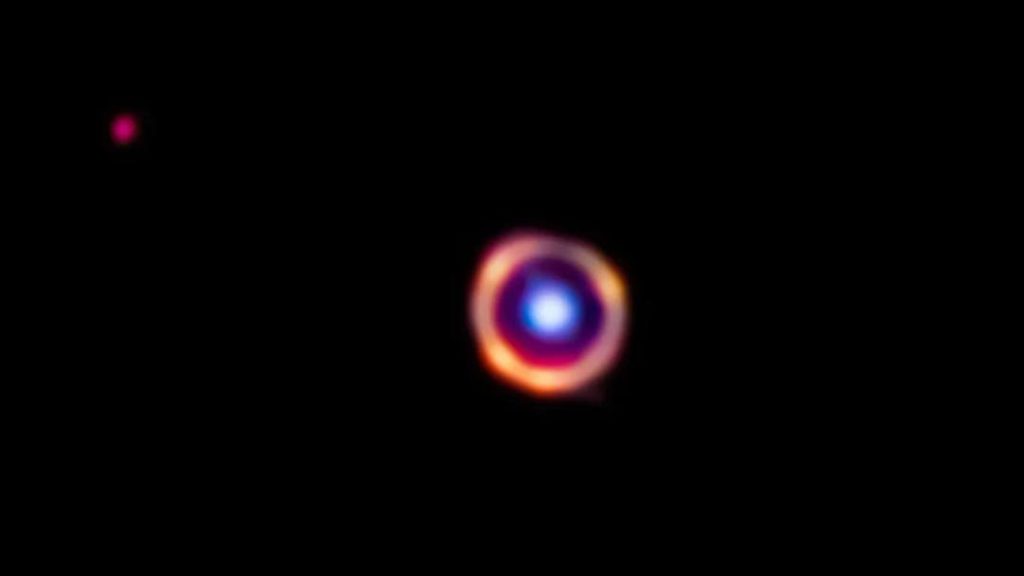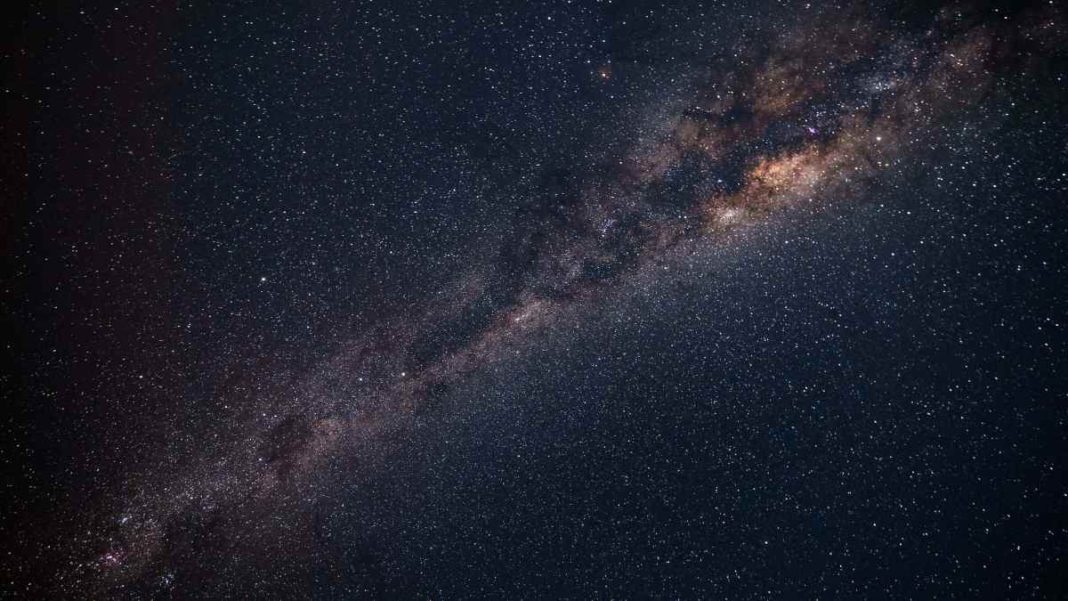UNITED STATES: A remarkable breakthrough in space exploration has been achieved by an international team of astronomers using the powerful James Webb Space Telescope. Their pioneering research has unveiled the presence of organic molecules in a galaxy situated over 12 billion light years away, providing a glimpse into the universe as it existed a mere 1.5 billion years after the Big Bang.
This discovery challenges previous assumptions about the relationship between organic molecules and star formation, reshaping our understanding of early cosmic evolution.
Webb’s new milestone in space exploration
The University of Texas A&M, leading the research, announced that the findings shed light on the organic composition of the universe during its infancy. The galaxy in question was observed through a phenomenon known as gravitational lensing, in which light from a distant object is magnified and distorted by a massive galaxy acting as a cosmic lens.
The distant galaxy, appearing as an ethereal Einstein ring, captured the attention of astronomers worldwide. Albert Einstein himself had predicted this effect in his theory of relativity, and now, thanks to the cutting-edge capabilities of the Webb telescope, scientists have unlocked the secrets hidden within the cosmic spectacle.

Dr. Justin Spilker, the lead author of the research published in Nature, expressed excitement over the discovery. He stated, “These findings challenge our previous assumptions about the link between organic molecules and star formation. While we expected to find organic molecules where stars were forming, the high-definition images from Webb reveal ‘smoke’ in regions devoid of star formation and star formation in regions without ‘smoke.'”
The detected organic molecules resemble those commonly found on Earth, such as smoke, soot, and smog. Previously, astronomers associated the presence of these molecules with the birth of new stars. However, the current study indicates that this correlation may not always hold true. The team believes that these large organic molecules may play a more intricate role in cosmic processes than previously understood.
The James Webb Space Telescope, known for its exceptional sensitivity and advanced technology, has opened a new window into the early universe. By scrutinizing a galaxy from the distant past, scientists have been able to explore the cosmic landscape when the universe was less than 1.5 billion years old.
The Webb telescope’s ability to peer into the depths of space has provided invaluable insights into the distribution and behavior of organic molecules during the universe’s infancy.
Dr. Sarah Johnson, an astrophysicist from NASA and a member of the research team, expressed her enthusiasm for the groundbreaking discovery, saying, “These findings represent a major leap forward in our understanding of the early universe. The James Webb Space Telescope has once again proven its unparalleled capabilities and demonstrated its pivotal role in unraveling the mysteries of our cosmic origins.”
As astronomers continue to push the boundaries of space exploration, the discoveries made by the Webb telescope serve as a testament to human ingenuity and the insatiable curiosity that drives our quest for knowledge. The revelation of ancient organic molecules in a distant galaxy marks a milestone in our cosmic journey and ushers in a new era of astronomical exploration.
With each new revelation, humanity takes another step towards comprehending the immense tapestry of the cosmos and uncovering the secrets that have been shrouded in the depths of space since time immemorial.
The James Webb Space Telescope, peering through the veil of the early universe, has become a beacon of discovery, illuminating the wonders that lie beyond our reach and inspiring future generations to explore the unexplored.
Also Read: NASA-JPL Psyche Mission on Track for Successful Launch Following Outstanding Progress



